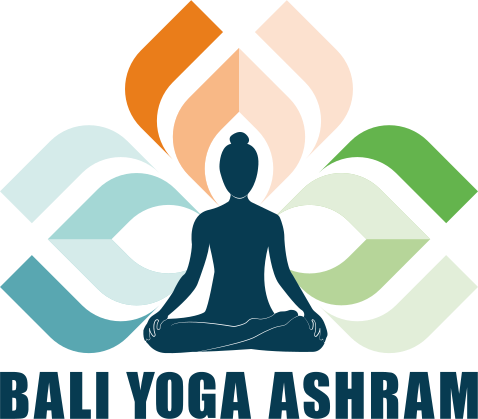
Bandhas, a significant aspect of yogic practices, are energy locks or seals used to regulate and direct the flow of prana (life force) within the body. The term “bandha” comes from the Sanskrit word meaning “to bind” or “lock.” By engaging specific muscles and energy centers, bandhas help to control the subtle energy within, enhancing physical, mental, and spiritual well-being. There are three primary bandhas commonly practiced in yoga: Mula Bandha, Uddiyana Bandha, and Jalandhara Bandha. Understanding and incorporating these bandhas into one’s practice can deepen the experience of yoga and promote a harmonious connection between the body and mind.
From a philosophical perspective, practicing bandhas is believed to harmonize the flow of prana, which is considered essential for the journey of self-discovery and spiritual awakening. By activating and controlling these energy locks, practitioners aim to balance the subtle energy channels (nadis) and chakras within the body. The concept of bandhas is deeply intertwined with the idea of prana and the understanding that life force energy is not only present within the physical body but also permeates the entire universe. Practicing bandhas is seen as a way to harness and channel this universal energy for physical, mental, and spiritual growth. Moreover, bandhas are often associated with the concept of Kundalini, which is depicted as a coiled serpent lying dormant at the base of the spine. The practice of bandhas, along with specific yogic techniques, is believed to awaken and guide the Kundalini energy upward through the chakras, leading to higher states of consciousness and self-realization.
So bandhas are the powerful kriyas that should be performed under a guru’s guidance to get the benefits out of them, as they are not merely physical actions but are seen as tools to control and direct the flow of life force energy within the body. They are an integral part of the yogic journey, aiming to facilitate spiritual growth and self-awareness..
- Mula Bandha (Root Lock): Mula Bandha is the first and foundational bandha, situated at the pelvic floor. To engage Mula Bandha, contract the muscles at the base of the pelvis, similar to the action of holding in the urine. This subtle engagement directs the flow of prana upward, creating a sense of grounding and stability while encouraging the upward movement of energy through the Sushumna Nadi (central energy channel). Mula Bandha is often practiced in seated or standing postures, as well as during pranayama (breath control) practices. It supports the health of the pelvic organs and enhances awareness of the root of the spine.
- Uddiyana Bandha (Abdominal Lock): Uddiyana Bandha involves the contraction and lifting of the abdominal muscles and diaphragm. To perform Uddiyana Bandha, exhale completely, draw the abdomen in and up toward the spine, and hold the breath out. This action creates a vacuum-like effect in the abdominal area, and the internal organs are lifted upward and inward. Uddiyana Bandha helps in massaging and toning the abdominal organs, improving digestion, and activating the solar plexus chakra. It is commonly practiced during pranayama and in certain advanced yoga poses.
- Jalandhara Bandha (Throat Lock): Jalandhara Bandha is performed by lowering the chin and pressing it firmly against the sternum (breastbone). This action creates a lock at the throat, sealing the upper part of the respiratory system. Jalandhara Bandha is often practiced in conjunction with breath retention during pranayama practices like Ujjayi Pranayama or Kumbhaka (breath retention). It helps redirect prana towards the higher energy centers and enhances the flow of energy along the Vishuddha Chakra (throat chakra). Jalandhara Bandha also stimulates the thyroid gland, promoting its health and function.
Benefits of Bandhas:
- Enhanced Pranic Flow: By controlling the energy flow, bandhas ensure a balanced and harmonious distribution of prana throughout the body, nourishing and revitalizing the entire system.
- Stability and Balance: The engagement of specific muscle groups provides a stable foundation during yoga poses, enhancing alignment and reducing the risk of injuries.
- Subtle Body Awareness: Practicing bandhas cultivates sensitivity to the subtle energies within the body, leading to a deeper understanding of one’s internal states.
- Improved Breath Control: Bandhas, when combined with pranayama practices, deepen breath awareness, allowing for more profound control and expansion of the breath.
- Chakra Activation: Certain bandhas facilitate the flow of prana through specific energy centers (chakras), supporting their balance and activation.
- Internal Organ Health: Uddiyana Bandha aids in massaging and toning the abdominal organs, promoting digestive health and overall well-being.
Precautions and Considerations: While bandhas offer numerous benefits, they require guidance and practice to be executed safely and effectively. It is crucial to practice under the guidance of an experienced yoga teacher, particularly when first learning the bandhas. Engaging the bandhas should feel natural and comfortable; avoid any force or strain. Pregnant women, individuals with specific health conditions, or those recovering from injuries should exercise caution and consult a qualified instructor or healthcare professional before practicing bandhas.
Bandhas are powerful tools that enhance the practice of yoga by directing the flow of prana, promoting stability, and cultivating subtle body awareness. Regular practice of Mula Bandha, Uddiyana Bandha, and Jalandhara Bandha can deepen one’s connection to the subtle aspects of yoga, leading to greater physical and mental balance, and a profound sense of unity within the body and mind.
To learn more about Bandhas and many more concepts that are connected with your body, mind and entire energy system join our upcoming 200 hour Yoga teacher training course where you will find the perfect balance of Yogic practise both on and off the mat. Please contact us to know more about this.

